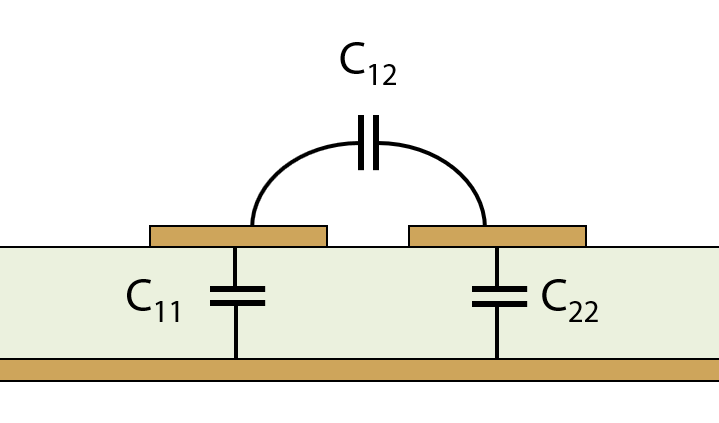EMC Question of the Week: August 3, 2020
Two parallel circuit board traces located 1 mm above a ground plane have a mutual capacitance of 20 pF/m. If their height above the ground plane is reduced to 0.25 mm, their mutual capacitance will
- decrease
- increase
- stay the same
Answer

The best answer is "a". The mutual capacitance is determined by the amount of electric flux lines that originate on one trace and terminate on the other when there is a give voltage between them. As the trace pair moves closer to the ground plane, more of the electric flux is captured by the plane. This increases the capacitance from each trace to the plane while reducing the mutual capacitance between the traces.
Note that the measured capacitance between the traces would increase. This is because the measured capacitance is C12 in parallel with the series combination of C11 and C22. Nevertheless, the capacitance of interest to EMC and signal integrity engineers is C12, the mutual capacitance. Capacitive crosstalk is directly proportional to C12. So if there were capacitive crosstalk between signals on trace 1 and trace 2, reducing the height of these traces above the current-return plane would reduce this crosstalk.
And yes, the width, separation and initial height of the traces was not specified. Neither was the permittivity of the dielectric. And yes, it's true that if the trace separation were already much greater than 1 mm, then changing the height above the plane would have little effect on the (already very small) mutual capacitance. However, the initial mutual capacitance of 20 pF/m suggests that the traces are near each other relative to their height above the plane for typical circuit board and trace dimensions.
Have a comment or question regarding this solution? We'd like to hear from you. Email us at
